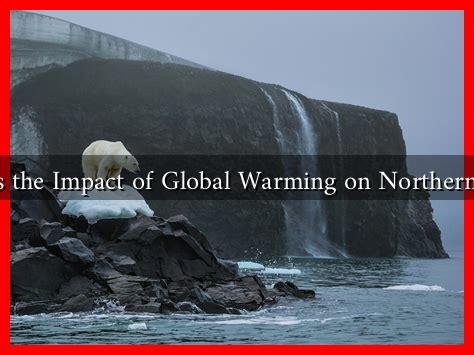-
Table of Contents
What is the Impact of Global Warming on Northern Lights
The Northern Lights, or Aurora Borealis, are one of nature’s most breathtaking phenomena, captivating millions with their vibrant colors and ethereal movements across the Arctic skies. However, as global temperatures rise due to climate change, the implications for this natural wonder are becoming increasingly significant. This article explores the relationship between global warming and the Northern Lights, examining how climate change affects their visibility, frequency, and the broader environmental context in which they occur.
The Science Behind the Northern Lights
Before delving into the impact of global warming, it is essential to understand how the Northern Lights occur. The Aurora Borealis is caused by charged particles from the sun colliding with gases in the Earth’s atmosphere. This interaction produces stunning displays of light, primarily in regions close to the magnetic poles.
. The intensity and frequency of these displays are influenced by solar activity, which follows an approximately 11-year cycle.
Global Warming and Its Effects on the Arctic Environment
Global warming is primarily driven by the increase of greenhouse gases in the atmosphere, leading to rising temperatures worldwide. The Arctic region is warming at a rate nearly twice as fast as the global average, resulting in significant environmental changes:
- Melting Ice Caps: The Arctic ice is diminishing rapidly, with the extent of summer sea ice decreasing by about 13% per decade since the late 1970s.
- Changing Weather Patterns: Warmer temperatures are altering weather patterns, leading to more extreme weather events and shifts in precipitation.
- Impact on Wildlife: The changing climate affects the habitats of various species, disrupting ecosystems and food chains.
How Global Warming Affects the Northern Lights
While the Northern Lights themselves are not directly caused by climate change, the conditions that influence their visibility and frequency are being altered. Here are some key impacts:
- Increased Cloud Cover: Warmer temperatures can lead to increased humidity and cloud cover in the Arctic, which may obscure the visibility of the Northern Lights. A study published in the journal Environmental Research Letters indicates that cloud cover in the Arctic has increased by approximately 5% over the past few decades.
- Changes in Solar Activity: While solar activity is a natural phenomenon, its interaction with a warming atmosphere may lead to unpredictable changes in auroral displays. For instance, a study from NASA suggests that the sun’s activity could be influenced by climate patterns, potentially affecting the frequency of auroras.
- Altered Magnetic Field Interactions: As the Earth’s magnetic field shifts due to climate change, the pathways through which solar particles enter the atmosphere may also change, potentially affecting the intensity and location of auroras.
Case Studies and Observations
Several studies and observations have highlighted the relationship between climate change and the Northern Lights:
- Alaska’s Changing Skies: Research conducted in Alaska has shown that increased temperatures have led to more frequent cloudy nights, reducing the number of clear nights suitable for aurora viewing.
- Greenland’s Ice Melt: As Greenland’s ice melts, the resulting changes in sea levels and local climates may also impact the visibility of auroras, as warmer air can lead to more cloud formation.
Conclusion
The Northern Lights are a mesmerizing natural phenomenon that has captivated humanity for centuries. However, the impacts of global warming pose significant challenges to their visibility and frequency. As the Arctic continues to warm, increased cloud cover, changes in solar activity, and alterations in magnetic field interactions may all contribute to a decline in the frequency and intensity of auroral displays. Understanding these changes is crucial for both scientists and enthusiasts alike, as it highlights the broader implications of climate change on our planet’s natural wonders.
In summary, while the Northern Lights may continue to dazzle us for years to come, their future is intricately linked to the health of our planet. As we confront the realities of global warming, it is essential to advocate for sustainable practices that protect not only the beauty of the auroras but also the delicate ecosystems that support them.





